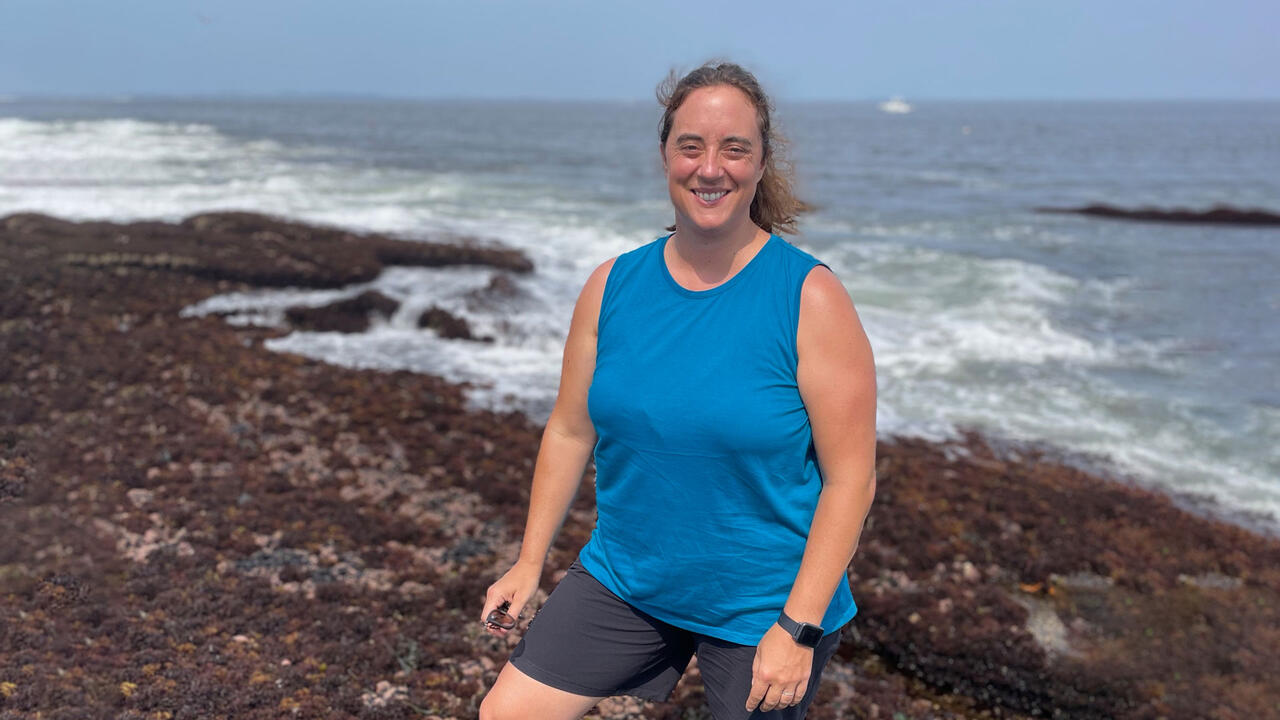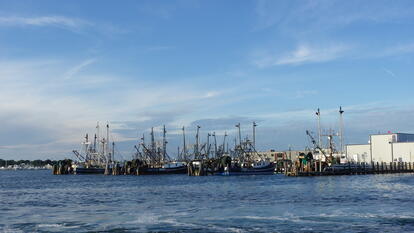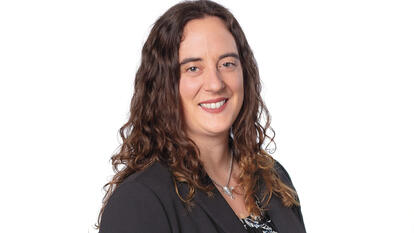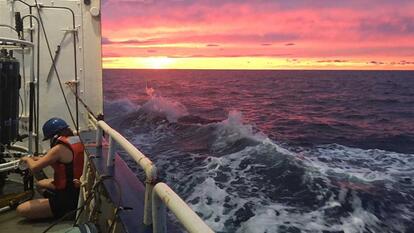
Biology Professor Becca Selden’s 5 Tips for a Sustainable Seafood Summer
Cool sea breezes, rubber boots, and fresh seafood. Nothing beats fieldwork on the rocky shores of Massachusetts! As travel restrictions have eased within the state, my summer research students and I have finally begun the intertidal fieldwork I had planned when I joined the Wellesley faculty. We have ventured onto shorelines from Rockport to Boston in search of the perfect tide pool, rocky bench, or cobble field in which to track changes in the populations of green crabs Carcinus maenas, invasive Asian shore crabs Hemigrapsus sanguineus, periwinkles Littorina littorea, and mussels Mytilus edulis. As one of my students said on our first field trip of the season, we are so lucky that our research is almost guaranteed to be in places where we can enjoy delicious seafood.
I have spent more than a decade studying fisheries—the activity of fishing for a specific species (or using a specific gear)—and marine ecosystems. Not so long ago, many of our fisheries in the U.S. were overfished, where fish population levels were too low, or overfishing was occurring where harvest rates were too high to be sustainable. The most recent report to Congress on the status of our fisheries shows dramatic improvement since the 1990s: Overfishing is occurring in only 8 percent of all US fisheries, and 20 percent of fishery stocks are overfished. Forty-seven stocks that were once overfished have been rebuilt since 2000, and this rebuilding was good for fisheries, with more than a 50 percent increase in commercial revenues.
While achieving sustainability for the world’s fisheries in the face of climate change is a daunting challenge, I don’t believe the solution is to stop buying seafood, especially in the U.S., where we have many choices that are both good for fishing communities and sustainable. Instead, the answer is to know where your fish are coming from. Here are my tips to help you make the most of the beach days with a sustainable seafood summer!
-
Whether you buy fish from a grocery store or directly from a fish market, it’s becoming easier to find out its origin, either through its label or by asking the fishmonger. All seafood sold in the U.S. is required to have country of origin labeling on the package. Given that the majority of U.S. fisheries are strictly regulated, if a wild-caught fish was caught in the U.S., there is a good chance it was fished sustainably. FishWatch, the nation’s database on sustainable seafood, has more specific information you can reference as you shop. Within the Northeast, several fisheries have also been certified as sustainable by the Marine Stewardship Council, including haddock, pollock, and redfish, winter and little skate, and squid. Some retailers, like Whole Foods, have committed to selling only seafood that meets sustainability standards, and they give the specific standard on their labels.
-
Going to a local seafood market will mean you are one step closer to the fishery supply chain and more likely to find U.S.-caught seafood. In Boston, for example, Red’s Best is a leader in both buying directly from fishers and using an innovative tracking system that allows consumers to scan their purchase and learn about the fisher, the gear, and the species.
-
To get an even greater personal connection to a fishery, look for a community supported fishery (CSF) in your area. CSFs are the fishery equivalent to community supported agriculture (CSA). Just like with a CSA, you sign up for a weekly “share,” but in this case you get the fresh catch instead of produce. CSFs benefit fishers in several ways: More of the money you pay for the fish goes directly to them, and whatever they catch that week is guaranteed a market. These types of programs may play an increasingly important role in the face of climate change, as research by myself and colleagues show species are likely to shift poleward into new areas, and this in turn changes the mix of species the fisher can harvest. (Find a CSF near you.)
-
Are you a fan of farmed fish or shellfish? You’re in luck! Farmed shellfish like oysters, clams, and mussels are almost always a good choice and can actually have environmental benefits, as they filter water. Massachusetts is famous for its farmed oysters and mussels, and both of these are on the “green” list from Monterey Bay Aquarium’s Seafood Watch as best choices for seafood options in the Northeast U.S. Wild-caught Alaska salmon are certified as sustainable by the Marine Stewardship Council, while farmed salmon are either Seafood Watch green or yellow for inland and ocean pen-based facilities, respectively. Avoid farmed shrimp that comes primarily from Asia and Latin America with unsustainable practices
-
If you want to enjoy seafood at a restaurant, you can now choose one that partners with local fishers. Started as a CSF, Dock to Dish created the first restaurant supported fishery (RSF) by partnering with a cooperative of fishers from Montauk, N.Y., with Blue Hill of Stone Barns restaurant. Since then, the concept has expanded to include restaurants and fisheries around the country.
To learn more about my approach to understanding sustainable fisheries in the face of climate change, read about my research at Wellesley. Check out our recent paper on the ways in which fishing communities in the Northeast are already responding to shifting species distributions.
Meanwhile, you’ll find me in my rubber boots, stomping through tidepools, and eating crabcakes.



